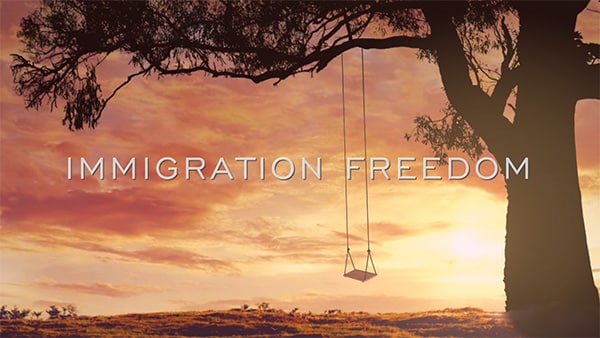For many families in the Dallas-Fort Worth area, the dream of reunification extends beyond immediate relatives like spouses, minor children, and parents. While those categories benefit from an unlimited number of visas, U.S. immigration law also provides a pathway for other family members through a system of “family preference categories.”
This path involves more complexity and patience, primarily due to annual visa limits set by Congress. Understanding these categories, the application process, and the concept of priority dates is crucial for setting realistic expectations. This guide breaks down how U.S. citizens and Lawful Permanent Residents (LPRs) in DFW can sponsor their extended family members.
Understanding the Family Preference Categories
Unlike immediate relatives, “other relatives” are placed into a tiered system. The wait time for an available visa depends on the category and the applicant’s country of origin. A limited number of visas are issued for each category annually, creating a queue.
Here are the specific preference categories for relatives of U.S. citizens and LPRs:
Family of a U.S. Citizen
If you are a U.S. citizen, you can petition for the following relatives:
- First Preference (F1): Unmarried sons and daughters (21 years of age and older) of U.S. citizens.
- Third Preference (F3): Married sons and daughters of U.S. citizens.
- Fourth Preference (F4): Brothers and sisters of U.S. citizens (if the U.S. citizen is 21 years of age and older).
Family of a Lawful Permanent Resident (LPR)
If you hold a Green Card, you can petition for:
- Second Preference (F2A): Spouses and unmarried children (under 21 years of age) of LPRs.
- Second Preference (F2B): Unmarried sons and daughters (21 years of age and older) of LPRs.
It is important to note that Lawful Permanent Residents cannot petition for married children or siblings.
The Key to the Process: Priority Dates and the Visa Bulletin
The most significant difference between immediate relative and preference category cases is the wait. When the U.S. citizen or LPR files the initial petition, the date it is received by USCIS becomes the “priority date.” This date establishes the beneficiary’s place in the visa queue.
To track this queue, the U.S. Department of State publishes a monthly Visa Bulletin. This chart shows which priority dates are “current,” meaning those individuals can now proceed with their Green Card application.
- How it works: You must check the Visa Bulletin for your specific preference category (e.g., F1, F3). When your priority date is earlier than the date listed on the chart, your visa is available.
- The Wait: Wait times can range from a few years to over a decade, depending on the preference category and the high demand from certain countries. Patience is essential.
Navigating the Application Process
The journey for preference category relatives follows a structured path, whether they are in the U.S. or abroad.
Step 1: The Initial Petition (Form I-130)
The process begins when the U.S. citizen or LPR sponsor files Form I-130, Petition for Alien Relative. This form proves the qualifying family relationship. Once approved, it doesn’t grant any immediate immigration benefit. Instead, it secures the beneficiary’s priority date and place in the visa line.
Step 2: Waiting for the Priority Date to Become Current
This is often the longest part of the process. During this time, the beneficiary and sponsor must monitor the Visa Bulletin. It is also critical to keep USCIS updated with any changes of address for both the petitioner and beneficiary to ensure you receive important notices.
Step 3: The Final Green Card Application
Once the priority date is current, the beneficiary can apply for the Green Card. The path depends on their location:
- Consular Processing: If the relative is outside the United States, the approved I-130 petition is sent to the National Visa Center (NVC). The NVC collects fees and documents before forwarding the case to a U.S. embassy or consulate for an interview.
- Adjustment of Status: If the relative is already inside the United States on a valid nonimmigrant visa, they may be eligible to file Form I-485, Application to Register Permanent Residence or Adjust Status, without leaving the country. This is only possible if they have maintained lawful status and their priority date is current.
Required Documents
Proper documentation is vital. While specific requirements vary, you will generally need:
- Proof of Petitioner’s Status: The U.S. citizen’s passport, birth certificate, or naturalization certificate, or the LPR’s Green Card.
- Proof of Relationship: Birth certificates for children/siblings or marriage certificates for spouses of LPRs. In sibling cases, you must provide birth certificates for both the petitioner and the beneficiary showing at least one common parent.
- Affidavit of Support (Form I-864): The sponsor must prove they can financially support the relative at 125% above the federal poverty line.
- Civil Documents: The beneficiary will need their passport, passport-sized photos, and any applicable police clearance certificates.
Local DFW Resources for Your Immigration Journey
The Dallas-Fort Worth Metroplex offers several resources to help families navigate this complex process.
- USCIS Offices: The Dallas Field Office in Irving, TX, handles Adjustment of Status interviews. Several Application Support Centers across DFW are used for biometrics appointments.
- Community and Non-Profit Support: Organizations like Catholic Charities Dallas and Refugee Services of Texas provide low-cost legal services and support for immigrant families.
- Experienced Immigration Attorneys: Given the long waits and legal complexities of preference categories, professional guidance is highly recommended. An attorney can ensure your petition is filed correctly, help you track your case, and prepare you for the final steps.
Navigating Green Card through Family: Other Relatives of a U.S. Citizen or Lawful Permanent Resident requires a deep understanding of the law and a long-term strategy.
Why You Need Professional Legal Guidance
The stakes are high in family preference cases. A mistake on the initial I-130 can cause years of delays. Life changes during the long wait—such as a marriage, divorce, or a petitioner’s death—can impact eligibility. An experienced immigration attorney can provide invaluable guidance by:
- Ensuring the petition is filed correctly to secure the earliest possible priority date.
- Advising on how life events may affect the case.
- Helping you navigate the NVC process or prepare an Adjustment of Status application.
- Representing you if any complications or Requests for Evidence arise.
Don’t risk your family’s future on a misunderstanding of the rules.
Conclusion
Bringing a sibling, adult child, or other relative to the U.S. is a marathon, not a sprint. The family preference categories provide a clear, albeit lengthy, path to permanent residence. By understanding the process, tracking your priority date, and preparing your documents thoroughly, you can successfully navigate this journey.
If you are a U.S. citizen or permanent resident in the DFW area ready to sponsor a relative, contact a qualified immigration attorney. Professional advice can provide clarity, confidence, and the best possible chance of reuniting your family.
Meta Title: Green Card for Siblings & Adult Children in DFW | Family Visa
Meta Description: Learn how U.S. citizens & LPRs in Dallas-Fort Worth can sponsor siblings or adult children for a Green Card through family preference categories.






